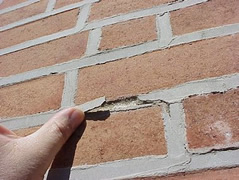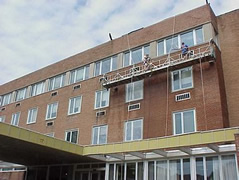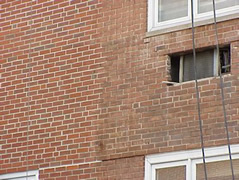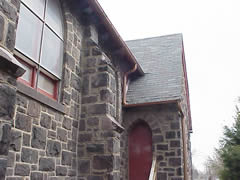
I can't get No!, (DA DA DA) satisfaction, (DA DA DA). I can't get No!, (DA DA DA) sa - tis - faction. Cause I try and I try and I try and I try. "I can't get No! satisfaction." - The Stones
Some lyrics go straight to infamy. The Rolling Stones hit a nerve for many people that was as true in 1965 when the song "Satisfaction" was written as it is today. We all want to be satisfied with something. That something is usually rooted in the passion of what drives us. It doesn't come easy. If satisfaction came easy we would probably admit we settled for a temporary fix knowing inside that what we settled for was a fake and find ourselves remaining dissatisfied. To attain inward contentment and peace, no matter the circumstance, is known to be paramount for good physical and emotional health.
The "satisfaction" theme in this newsletter is prompted by an omission I made on my website which has been up now for over 7 years. I have collected many letters of "thanks" from previous customers over the past 20 years and simply forgot to post these customer testimonials until just last month! I certainly was filled with pride to dust off all the copy, read them once again, compile them and get them up on the web. I am proud to announce their location for viewing is http://www.limeworks.us/customer-satisfaction.php.
Many have asked me over the years, after reviewing our portfolio book and upon reading the customer testimonials, "How did you do it Andy?" The heart of this newsletter is revealing the simple principle I use to give such satisfaction to our customers which I think is universally true for anyone wanting to receive or deliver something satisfying. I always reply by telling them "I try to do exactly what I said I would do, for the price I said I would do it, when I said I would do it." There has been no other recipe that the deGruchy Masonry company has used to make customers happy with our service. I am proud that we have kept it simple, old fashioned and thoroughly satisfying in return for us as well as our customers.
If you want satisfaction and to do justice to your old beautiful historic structure then my advise to you is that you primarily be sure not to introduce new reasons for premature failure. Most of our work is undoing what was previously done. Ill informed efforts sometimes only aid in a historic structure's early demise.
The number one enemy to the conservation to our limited cultural and natural resources is man. Even when meaning well an irreversible error may be introduced to historic structures that were intended for repair and conservation.
Time is actually on the side of the historic structure's owner to make good choices in their plan for intervention. It is possible for a building to remain in better preservation for say its first 100 year life and due to hasty and inappropriate intervention be unwittingly put into an extensive cycle of re-repair or worse.
Nature renews itself. It seems to me that the closer we were to the earthy way of construction, when we simply used gravity to keep buildings in their place and mortar only as a cushion to keep bricks and stones separated, the better off we were. It is better in the longevity of a building's life cycle since soft lime mortar is adaptable and accommodates movement. It is better for the building's indoor air quality due to the vapor permeability of lime mortar which allows the building to breathe. The substantial contribution to regional heritage is achieved due to the beauty of the reflective qualities of lime wash paints that were easily renewed and wore away over time rather than peeled or trapped moisture.
Today vacant strip malls are glued together, lasts sometimes only 10 years, and are knocked down for another in it's place. Nothing long term is gained except excess CO2 emissions. Like trees, old lime-built buildings absorb CO2 making pure lime/sand mortar all the more a green-build construction material. Lime utilizes CO2 to aid in it's self-repair through crystalline bridging also known as autogenous healing. It is no wonder that God told Moses in Deuteronomy 27:2 to coat the 10 commandment stones with lime plaster and whitewash. He possibly meant this for the stone's sanctified preservation and for their contrasting clarity in the content of their writings.
For 6000 years of building history lime has been working for long lasting mortar, plaster and paint. I believe the 10 commandments have been working for self-preservation a lot like lime works for building preservation. Some consider both outdated and yet they still do the job. When tested and tried and used correctly, as they have been tried and challenged, they still work appropriately to serve and satisfy the end user as they always have.
Don't move an ancient boundary stone. (Proverbs 22:28). That boundary stone for historic buildings in my mind is lime, which has been supplanted by quick fix cement mixes. I hope the savvy reader who has the opportunity to influence their historic cultural resources will investigate the appropriateness of lime once again for mortar, plaster and paint.
Proactive
Preservation
Churches and Historic societies should know that I want to support regional
heritage and I encourage readers to share with me your expertise of what
you know about your local area's legacy. The purpose is to put together
two-minute radio segments airing weekly on radio. 107.5 Alive! WBYN of
Boyertown is the first to air "In the Limelight" with Andy deGruchy.
These segments are meant to raise awareness of the cultural heritage a
region brings to us all and to announce the lecture dates for my next
lime talk. The pilot of this program is in Pennsylvania but the intent
is to carry this proactive underpinning of regional heritage with the
help of historic societies and historians throughout New England and further.
Please contact me if you are able to contribute information about your
local heritage.
Announcement
The Third American Lime Conference is scheduled for May 20-21 in Monroe,
Virginia. Like the lime itself, the American Lime Conference just gets
better each year. If the supervisor of historic masonry trades from the
Colonial Williamsburg felt inspired to write about all the good information
received at the last lime conference, as stated in their response to that
program and printed in the conference brochure, you certainly will be
as inspired at this year's gathering. The great news is that the opportunity
to work with the material on Saturday, May 22nd is included if you can
stay and want to work with the master craftsmen that will be there ready
to get you involved. There is nothing more I personally appreciate than
the hospitality of everyone at Virginia Lime Works and their willingness
to get every question you have about lime answered truthfully and in a
forthright manner. They do all this and feed you some great down home
Southern country cooking! That's worth $395 itself in my opinion.
President, deGruchy Masonry Restoration, Inc.



completed their restoration. The owner asked if we could
bring it closer to a complete restoration more in line with
their original intent. The Strand, New Castle, DE.
brickwork with marble jack arches were meant to be crisp
and clean. That is what we attempted to do to the owners
satisfaction.
overlay using Trow & Holden's 1/2"-B stone carving tools
for careful removal of this previous inappropriate
intervention Elm Terrace Gardens, Lansdale PA.



North Penn Hospital. I spent 3 years of my life at this
building during high school scrubbing pots and pans in
the kitchen. 25 years later we scoured the entire exterior.
To what do I owe this affinity I wonder ?
working the brick on the flying trapeze (for 8 months with
short periods of food and rest)
Flying trapeze - aka Spider Swing Stage.
Don't try this at home.
Snapshot during the Elm Terrace re-do.


